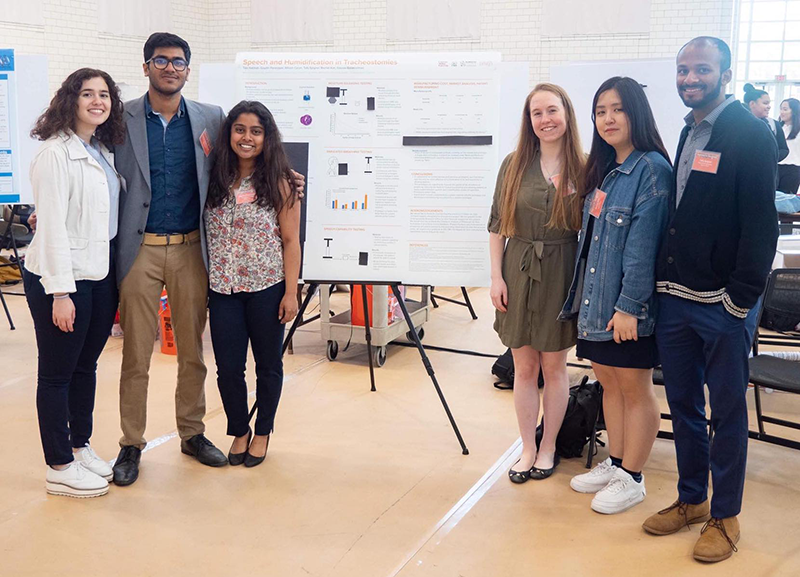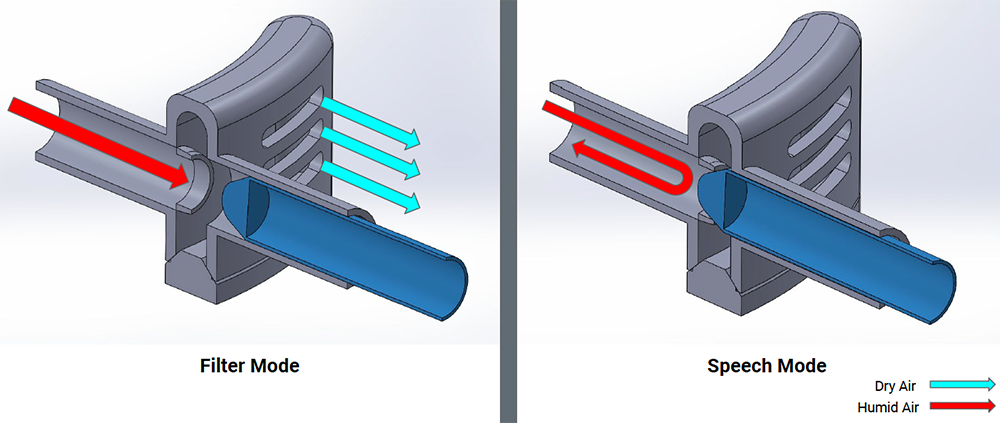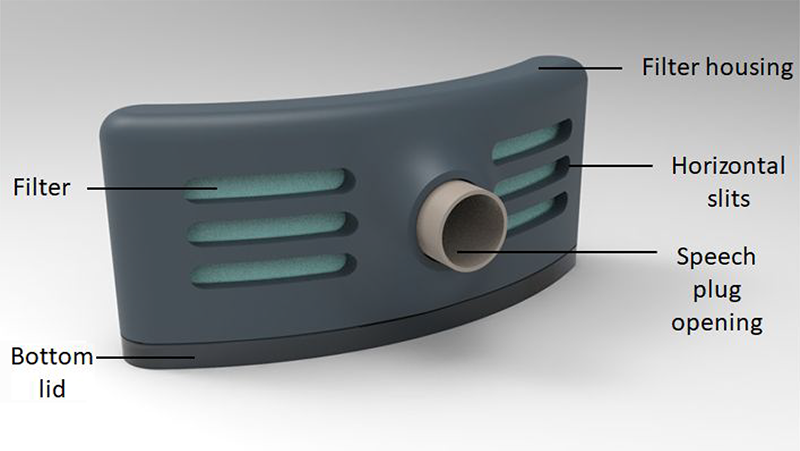Helping tracheostomy patients breathe easy
A capstone project by a group of biomedical engineering undergraduates has won awards for its innovative design to help tracheostomy patients receive better care.
Each summer, researchers from the BME department learn about quality-of-life issues affecting patients in various Pittsburgh hospitals, and come up with multiple prompts for student groups to start tackling once they return to campus in the fall. In the 2018-2019 academic year, five seniors studying biomedical engineering (BME) and a junior studying industrial design teamed up to solve one of these issues in Senior BME Design Capstone, a year-long course instructed by Conrad Zapanta, BME associate department head and professor.
The challenge was to improve the devices used by patients receiving a tracheostomy, a medical procedure in which a surgeon makes an incision on the front of a patient’s neck to create a new opening to the trachea or windpipe. This procedure can be life-saving and necessary for patients when the mouth, nose, and upper airway cannot provide breathing functions, but it is not without its downsides.
Air coming in through the neck incision does not get humidified as it normally would via the nose and mouth. The comparably dry air irritates the trachea, causing it to produce a moisturizing mucus in the throat that builds up over time. Devices called heat-moisture exchangers (HMEs) can be connected to the incision to humidify air coming in through the neck. However, even the best HMEs need to be replaced around three or four times a day when they become clogged with mucus. Constantly replacing the devices results in higher medical costs and a large amount of plastic waste. In addition, patients are usually unable to speak when connected to the devices, since the air they need to breathe cannot vibrate their vocal cords.

Source: Humidi-Speech team
The team, left to right: Gayatri Paranjape (team leader), Gaurav Balakrishnan (team leader), Tala Habbab (finance), Allison Caron (communications), Rachel Kim (design), and Tahj Spigner (manufacturing)
With these problems in mind, Gaurav Balakrishnan, Allison Caron, Tala Habbab, Rachel Kim, Gayatri Paranjape, and Tahj Spigner devised a plan for their year-long undertaking, incorporating patient feedback, market research, prototyping, testing, cost analysis, and developing reports to prove the viability of their product.
The group did market research to learn where they could reduce costs and consulted patient support groups. The group initially intended to improve existing suctioning devices, but they found that patients and their loved ones were more concerned about other features, like having the option of speaking while still breathing or to reduce air resistance to take in a bigger breath after strenuous activity.
After multiple stages of prototyping, the group came up with Humidi-Speech, a humidifying and speech-enabling tracheostomy attachment. The team tackled a long list of desired features in order to produce an innovative device featuring slits, a removable bottom, and a movable tube.

Source: Humidi-Speech team
Diagram of two modes of the final prototype, demonstrating how airflow is affected by the blue tube’s placement
The device (shown above) has two modes, which can be changed by the patient: filter mode and speech mode. The blue tube rests slotted in the grey cartridge, allowing air to move between the slits and the tube to the trachea. However, if the blue tube is pushed in a bit, it will stop the air flow going to the incision. That way, air coming up from the lungs can continue up past the vocal cords, allowing them to vibrate and create speech. Another benefit of the blue tube is that it can easily be taken out entirely, to provide for a greater intake of air. Although that air would not be humidified by the slits and filter, having a way to take in a large breath can help a patient who needs to do something strenuous, like get up to walk to the bathroom.
The slits for airflow are positioned on either side of the central tubes. “The reason why filters or HMEs are thrown out so often is that when you cough up mucus, it goes in and clogs the filters,” explains Balakrishnan. “Our filters are only on the two sides and not in the middle, so the chance of that happening is less. Also, you can take out the speech valve completely and leave just the hole, which would be a pathway for the mucus to come out without really dirtying up the device.” Air can still easily spill over to the slits, but any mucus is likely to remain at the center of the device, where it can be coughed or swabbed away.
Unlike other HMEs, Humidi-Speech provides a removable bottom, so that just the filters can be replaced instead of the entire device. This change makes the device more reusable, affordable, and eco-friendly than many other HMEs on the market. It also allowed the team to test different types of insertable filters. “Different filters will behave differently,” explains Habbab. “We found that for moisture capture, our final prototype captured moisture a lot better than our initial prototype, and a lot better than the commercial HME with our filter.”

Source: Humidi-Speech team
Digital rendering of the final prototype by Rachel Kim
For testing, the team used easily acquirable materials, such as a bicycle tire pump and small air humidifier. “We used the bicycle pump as an inhale, so that would be like dry air passing through the device. And then we would do that through a couple of different rounds to see how well the moisture would stay within the device,” said Caron.
Although the best commercial device could capture more moisture per breath than their prototype, the moisture it released per breath was much lower. Therefore moisture built up more quickly, causing the problems patients complained about in the first place. With Humidi-Speech, the rate of moisture captured was lower, but more similar to moisture released, causing less moisture and bacteria to collect in the device.
The team two notable awards with their results. Humidi-Speech was awarded third place in the Design by Biomedical Undergraduate Teams (DEBUT) challenge, supported by The National Institute of Biomedical Imaging and Bioengineering and VentureWell. The team was judged by their 10-page report, a team video, and a letter of support from a clinician who approved of the project. In addition, the team of seniors was recognized by the BME department as the Best BME Design Project, which earned them certificates at their undergraduate graduation ceremony.
The team is considering licensing their patent. The group ultimately hopes to sell the device design to an interested company or investor so that it can become commercially available.
The Humidi-Speech student team included: Gaurav Balakrishnan (BME/MSE ’19), Allison Caron (BME/MSE ’19), Tala Habbab (BME/MSE ’19); Rachel Kim (Design ’20), Gayatri Paranjape (BME/ChemE/Philosophy ’19), and Tahj Spigner (BME/MechE ’19).
